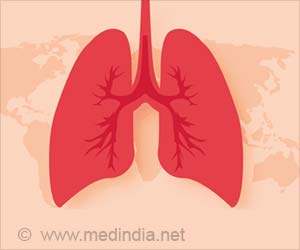Fatal influenza causes are largely unknown yet. A new study has now described important findings leading to so-called superinfections, which claim many lives around the world every year.

‘Influenza A virus (IAV)-related mortality is often due to secondary bacterial infections, primarily by pneumococci.
’





Influenza is caused by a virus, but the most common cause of death is secondary bacterial pneumonia rather than the influenza virus per se. Pneumococcal infections are the most common cause of community-acquired pneumonia and a leading global cause of death. A prior influenza virus infection sensitizes for pneumococcal infections, but mechanisms behind this increased susceptibility are not fully understood. Researchers at Karolinska Institutet have now identified influenza-induced changes in the lower airways that affect the growth of pneumococci in the lungs.Using an animal model, the researchers found that different nutrients and antioxidants, such as vitamin C and other normally cell-protective substances, leak from the blood, thereby creating an environment in the lungs that favors the growth of the bacteria. The bacteria adapt to the inflammatory environment by increasing the production of the bacterial enzyme HtrA.
The presence of HtrA weakens the immune system and promotes bacterial growth in the influenza-infected airways. The lack of HtrA stops bacterial growth.
"The ability of pneumococcus to grow in the lower airways during an influenza infection seems to depend on the nutrient-rich environment with its higher levels of antioxidants that occurs during a viral infection, as well as on the bacteria's ability to adapt to the environment and protect itself from being eradicated by the immune system," says principal investigator Birgitta Henriques Normark, professor at the Department of Microbiology, Tumor and Cell Biology, Karolinska Institutet.
The results provide valuable information on how bacteria integrate with their environment in the lungs and could be used to find new therapies for double infections between the influenza virus and pneumococcal bacteria.
Advertisement
It is still not known if COVID-19 patients are also sensitive to such secondary bacterial infections, but the researchers think that similar mechanisms could potentially be found in severely ill COVID-19 patients.
Advertisement
Source-Eurekalert













